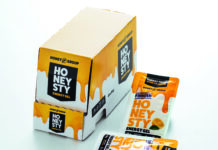
The global Covid-19 crisis impacted print segments across markets and continents. The fast-moving consumer goods (FMCG) segment is no exception to this intercontinental trend that shutdown markets across the world in nationwide lockdowns following the brisk spread of the Coronavirus.
According to a recent report by Research and Markets, the size of the international point-of-purchase (POP) display market was estimated at US$ 16.92 billion (approximately Rs 1,27,170 crore) and is expected to grow at a CAGR of 9.51% to US$ 29.19 billion (approximately Rs 2,19,392 crore) at the end of the 5-year forecast period in 2026.
The Asia-Pacific region is likely to grow at a steady pace in the current decade owing to the rapid increase in brand differentiation POP initiatives undertaken by local brands in an increasingly competitive retail space. Global enterprises are also expanding their geographical presence in these mushrooming markets.
The recent leap in the Indian retail segment has been identified as one of the prime factors that substantially affects the point-of-purchase display manufacturing market in the country. The ongoing disturbance due to the Covid-19 crisis has also resulted in a marked increase in the display of sanitizers and masks at pharmaceutical outlets and grocery stores.
Rapid population growth, increasing disposable incomes, and the shift from rural areas to tier-I and tier-II cities account for other factors that are gradually contributing to this increase. Covid-19 induced some panic-driven stocking habits of consumers that also contributed to the increased sale of packaged goods.
As the lockdowns ends, desi customers have discovered a newfound fascination for Make in India products as there is a general perception that doing this would help revive the nation’s economy. The months after the first wave of the pandemic also saw a gradual shift from globalization to localization, with customers making a beeline for India-based brands. At the same time, there is the counter-trend of the eCommerce segment, now widely considered as a deterrent to the expansion of the point-of-purchase industry in the Indian subcontinent.
Point-of-purchase is a well-established marketing strategy aimed at impulse purchases by end-users. The random product displays and seemingly harmless signage at retail outlets is a covert science that the retail industry routinely shies away from. However, POPs help to rake in the moolah besides improving customer engagement levels. Experiential marketing tactics like an inviting display of free samples of food and cosmetic products and, or, engagement strategies such as complimentary greeting cards, discount coupons, and natural Covid-19 prevention literature and immunity-boosting product catalogs that can be picked up, are a huge hit with buyers.
POP marketing is all about seizing the moment and POP displays come in a plethora of creative options including but not limited to free-standing displays, gravity feeds, end caps, clip strips, counter displays, floor displays, dump bins, and pallet displays. Paperboard, packaging foam, plastic, glass, and metal are widely employed in point of sale packaging solutions.
POP merchandising is also subtly gaining traction as an alternative to exorbitant advertising and promotional campaigns. It has proved to be a lucrative reinforcement strategy that strengthens the brand image in the shoppers’ minds in a practical manner. The same POP advertising solutions can be effectively employed to remind buyers about the brand for long durations of time.
The POP game plan can be gainfully applied to target niche segments such as pocket sanitizers and liquid soaps for the hypochondriacal or on-the-go needs of consumers in the wake of the Covid-19 scenario. At the same time, appealing spice displays can inspire home chefs looking to whip up a scrumptious meal at the drop of a hat.
Paras Spices’ came up with an innovative POP exhibit for its Orika range of premium spices, seasonings, condiments, and marinades which it exhibited at the Fi-Hi India 2021 exhibition held in Delhi’s Pragati Maidan in October. Designed in the shape of an Orika spice sprinkler jar, the POP exhibit instantly lured exhibition visitors to the finest spices and condiments on show.
Many global companies consider POP displays as an effective replacement for salespersons, who are often comparatively less attentive and knowledgeable to sales that can be garnered by strategically placing POP units in structured retail formats. Sales staff, in general, have little knowledge about product features and usage as they have to cover more customers and expanding product ranges with each passing week. Magazines, candies and chocolates, household supplies, snack items, and cosmetics are some segments that have shown appreciable results and can benefit tremendously from POP marketing campaigns.
POP displays have also ironically, livened up the in-store shopping experience. An attractive display adds an edge to the brands’ product portfolio while cementing its presence. Cross-marketing tactics such as placing the POP exhibit close to complementary products go a long way in reminding shoppers.
Tastefully designed POP displays acknowledge the requirements of both customers and retailers. Using brand colors, catchy slogans, strategic placement, and offbeat branding assist customers in picking up the product(s) in focus. Although highly significant, this is not all that needs to be achieved.
FMCG brands need to make sure that the POP marketing campaigns are effective in design as well as purpose. Retail chain implementation of POP marketing is as crucial as sculpting the perfect POP exhibit. Brands need to also communicate their vision effectively to retail managers to truly come up with a win-win situation for all!
NOTE – This article is from the March issue of Indian Printer & Publisher which will be posted to readers on 24 February 2022. It has several inputs from an article published in the Harvard Business Review about 40 years ago (November 1983) that is, however, still relevant.






